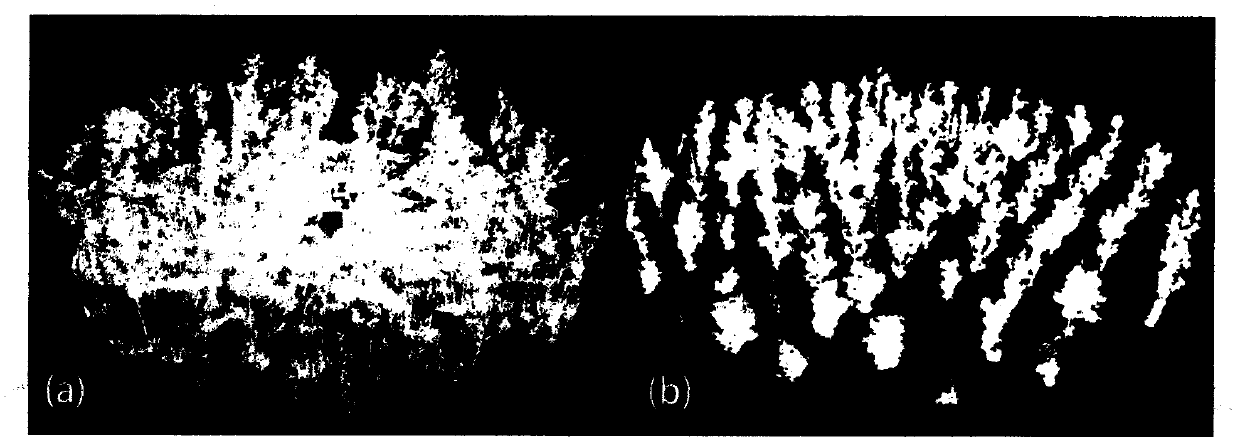Method for quantitatively describing forest clustering effect through three-dimensional point cloud data
A three-dimensional point cloud and point cloud data technology, which is applied to the details of 3D image data, the use of re-radiation, and image data processing, etc., which can solve the problem of drastic changes in the aggregation index, incomplete point cloud data, and inability to reflect aggregation effects. And other issues
- Summary
- Abstract
- Description
- Claims
- Application Information
AI Technical Summary
Problems solved by technology
Method used
Image
Examples
Embodiment Construction
[0032] The present invention will be further described below by specific examples:
[0033] Use the ground three-dimensional lidar scanner Leica ScanStation 2 to obtain the forest quadrat point cloud data according to the technical scheme step (1), including the single-station hemisphere scanning mode and the multi-station scanning mode ( figure 1 ). Three high-, medium-, and low-density quadrats with different densities (4.00, 1.30, and 0.71) were selected as the research objects. The high-density quadrats were coniferous forests, and the medium-low density quadrats were broad-leaved forests. In order to obtain the canopy pore size distribution accurately, the sampling interval was set to 10mm@10m in the high- and medium-density quadrats, and 15mm@10m in the low-density quadrats.
[0034] The data in the single-station hemispheric scanning mode were acquired at the center of the forest quadrat, and the points outside the circular area with a radius of 30m were removed. Thro...
PUM
 Login to View More
Login to View More Abstract
Description
Claims
Application Information
 Login to View More
Login to View More - R&D
- Intellectual Property
- Life Sciences
- Materials
- Tech Scout
- Unparalleled Data Quality
- Higher Quality Content
- 60% Fewer Hallucinations
Browse by: Latest US Patents, China's latest patents, Technical Efficacy Thesaurus, Application Domain, Technology Topic, Popular Technical Reports.
© 2025 PatSnap. All rights reserved.Legal|Privacy policy|Modern Slavery Act Transparency Statement|Sitemap|About US| Contact US: help@patsnap.com



